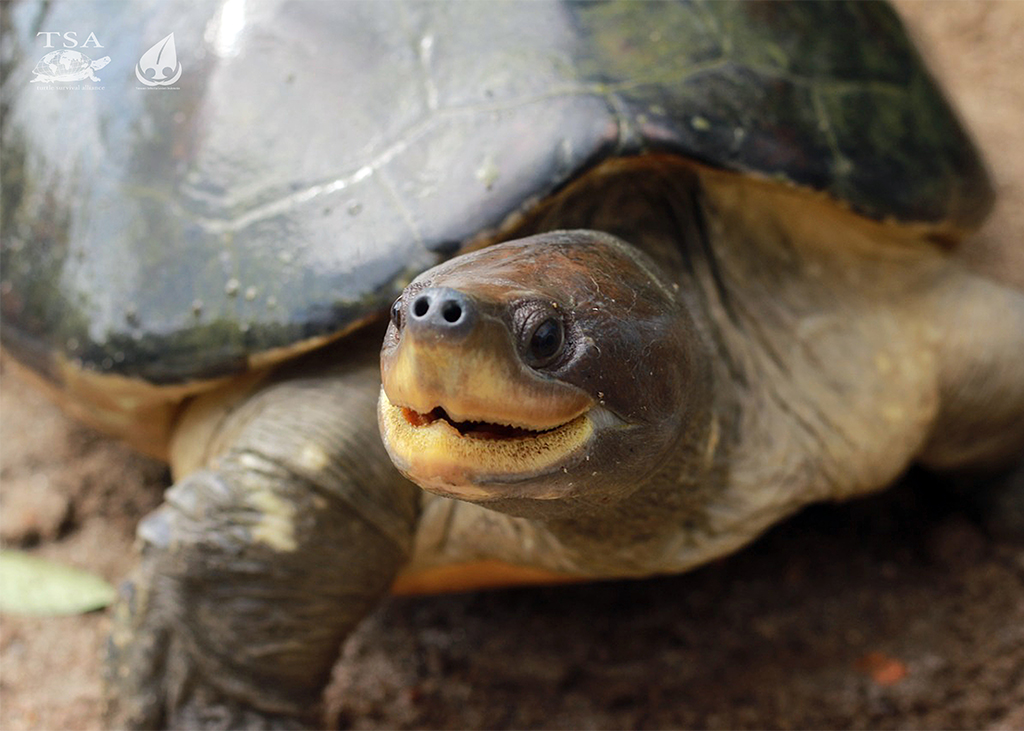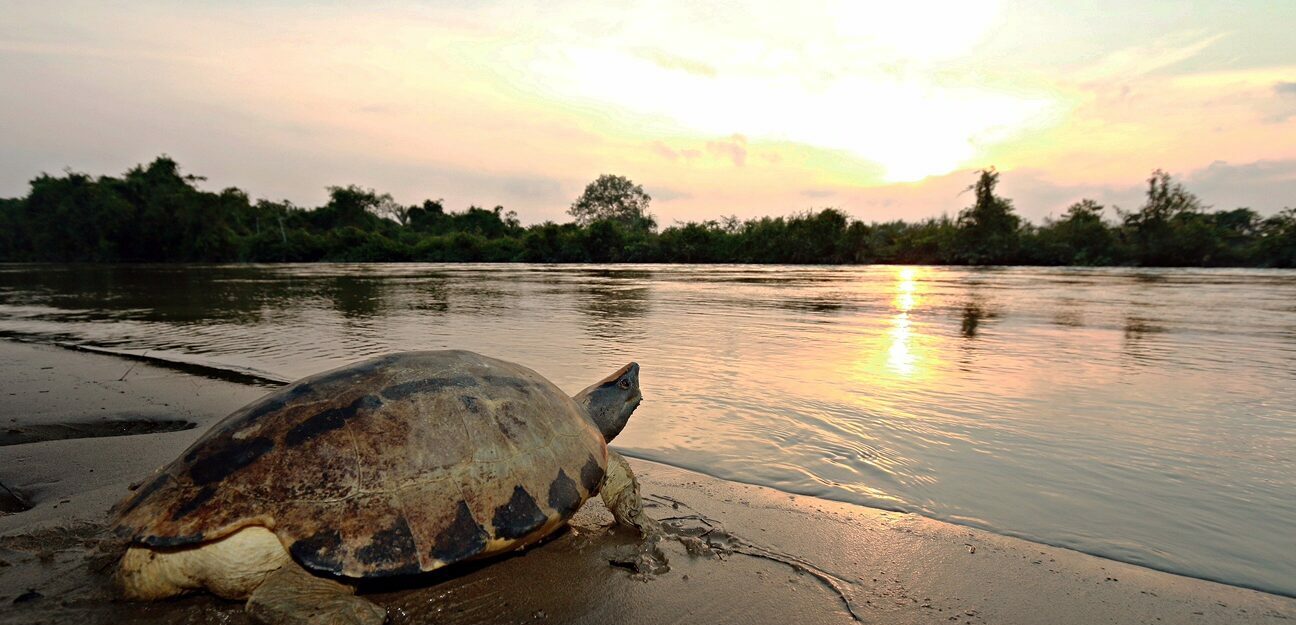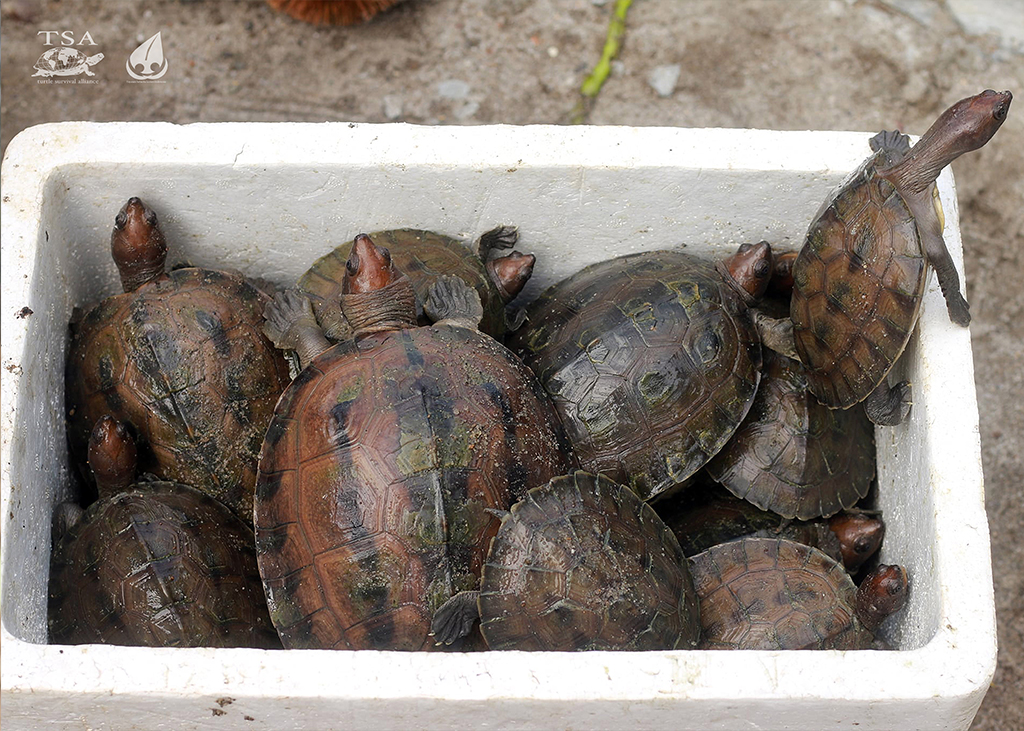
The Painted Terrapin is named for the bright coloration exhibited by males during breeding season.
The European term terrapin is believed to phonetically originate from torope, the word for turtle in the Powhatan tribe of the indigenous Algonquin peoples of coastal Virginia, United States. It would later be applied to the box turtle genus Terrapene, and to the Diamondback Terrapin (Malaclemys terrapin), the only turtle in the world to exclusively inhabit coastal brackish environments. In the genus Batagur, of which there are six species, this common name is applied to the three species whose habitat and activities include brackish rivers, estuaries, and coastal marine environments.



